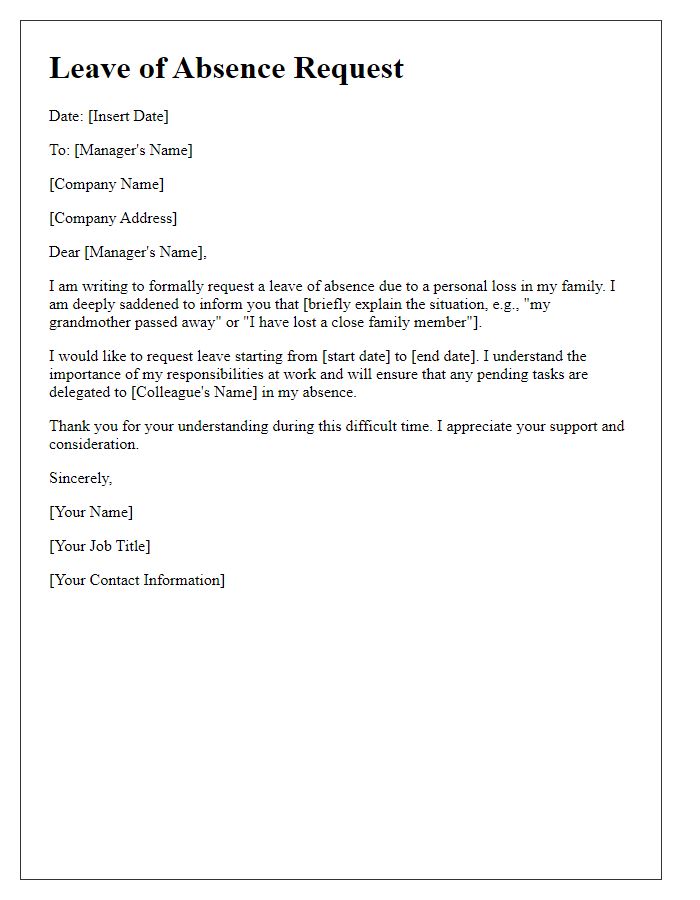Losing a loved one is a profoundly challenging experience, and it's important to take the time needed to grieve and heal. When faced with such a situation, crafting a thoughtful leave request can help convey your circumstances to your employer. In this article, we'll explore how to write a compassionate and respectful letter requesting bereavement leave, ensuring your message is clear and sincere. So, let's dive in and guide you through this delicate process!

Personal details and contact information
The process of requesting leave due to bereavement involves expressing the need for time off in a respectful and clear manner. Involving personal details, include the full name, position, and department within the organization. Note the specific dates for the requested leave period, ensuring clarity regarding the duration needed to mourn and attend to related arrangements. Include contact information, such as phone number or email address, to facilitate communication during the absence. Mention the relationship to the deceased, which can provide context for the request. Acknowledging company policies related to bereavement leave can aid in aligning the request with organizational support structures.
Clear subject line indicating leave request
Unexpected loss of a loved one can deeply impact emotional well-being and productivity in the workplace. Employees may feel the need for bereavement leave to process grief and engage in necessary funeral arrangements. Most companies provide a set number of paid bereavement days (often three to five) to offer support during this challenging time. Clear documentation of the relationship to the deceased may be required, along with a concise leave request submitted to Human Resources (HR). A respectful and straightforward subject line indicating the leave request (e.g., "Request for Bereavement Leave") can ensure prompt attention to the matter.
Brief explanation of the bereavement situation
The sudden passing of a close family member has left me in a state of deep sorrow and emotional distress. My grandmother, who was 88 years old and had been battling health issues, passed away on October 1, 2023. The loss has significantly impacted my family dynamics, and we are in the process of making arrangements for her memorial service. This event being held in our hometown, Springfield, requires my presence to support my family during this difficult time. I seek your understanding and support as I navigate this challenging period.
Duration of the requested leave period
A bereavement leave request is an essential communication following the loss of a loved one. The leave period typically requested ranges from three to five days, depending on individual circumstances and company policies. This leave allows employees to process grief, attend memorial services, or support family members during a difficult time. The specific duration can vary based on the employee's relationship with the deceased and the logistical considerations related to travel or funeral arrangements. Employers often recognize the sensitivity surrounding bereavement, typically providing understanding and flexible options.
Expression of willingness to assist with work arrangement
During times of bereavement, individuals may require time off to address personal issues related to loss and mourning. This period can involve emotional challenges necessitating support from colleagues and management. It is important to communicate the need for leave while also expressing a willingness to assist with work arrangements to ensure continuity. Coordination of tasks among team members can alleviate stress during the transition, ensuring that responsibilities are managed effectively. Clear communication regarding specific dates of absence and possible solutions, such as delegating tasks or preparing handover notes, can facilitate a smoother process. Engaging in this collaborative approach not only helps maintain workflow but also fosters a supportive work environment during difficult times.
















Comments